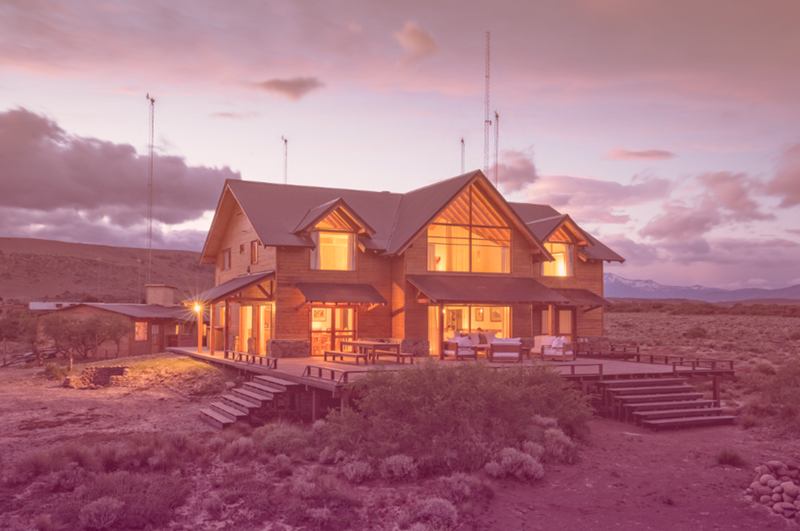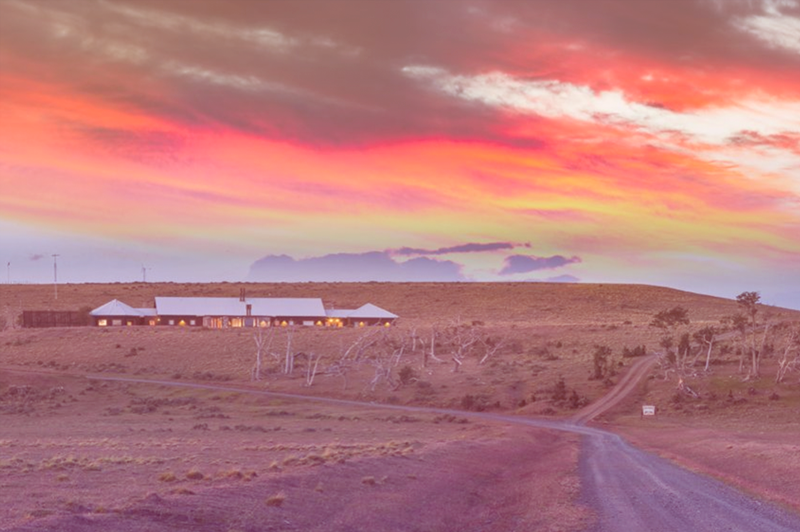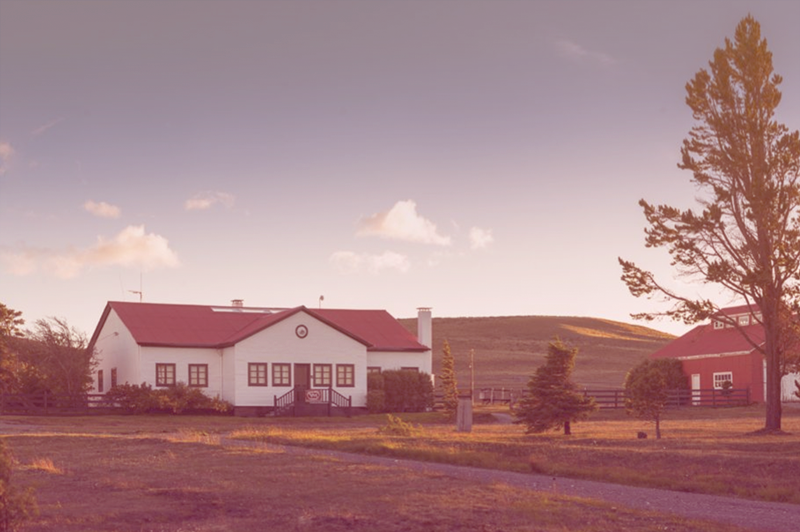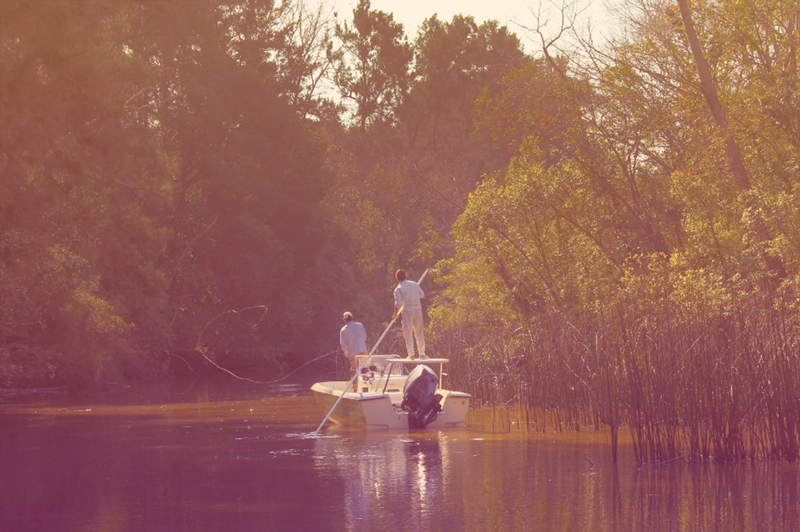ABOUT THE FISHING
Argentina is ranked internationally as one of the destinations par excellence to enjoy sport fishing. Natural conditions are contributing factors to the development and growth of this activity. Lakes and rivers, vegetation, climate, more than 30 species that inhabit our waters and the best lodges combine to offer an attractive, challenging and luxurious fishing experience. Anglers can find different challenges according to their expertise. Argentina has more than forty species of high sporting value, characterized by their great combativeness, beauty, size and wild quality. These characteristics distinguish Argentina as one of the most attractive fishing destinations in the world. The Patagonian lakes and rivers are suitable habitats for the life of several species of salmonids introduced in the early 20th century in the Patagonia, which have adapted and expanded its distribution throughout the Andean axis from the south to the north of the country. The rivers that make up the Paraná-Plata Basin house the biggest fish of high sporting value, natural of inland waters, some highly sought after and exclusive as the Dorado (Goldenfish) and the Surubí, or the kingfishes and tarariras of the Buenos Aires lagoons, and also varieties of the Atlantic Coast.
Middle hills are home of significant amounts of salmonids that have led to the largest concentration of fly fishermen from all over the country, as well as the puna cuyana trout fishing, four thousand meters high in landscapes of huge contrasts. Fly fishing is the technique that attracts more followers today, mainly because is the technique that offers greater opportunities to the fish, which gives fishing a more sporty character. The equipment used is sophisticated and requires mastering techniques of some complexity. It is the best alternative for the practice of “catch and release”. Trawling or Trolling fishing consists of towing, at a considerable distance, a lure with a paddle or motor boat. In spin fishing, a spinning reel is used to cast a lure of certain weight and pick an appropriate speed, so the lure simulates a living animal. Light equipment is used to make accurate throws and, if necessary, from great distances.
WHERE TO FISH

The Upper Paraná is a large river system, featuring dorado, pacú, and pirá pitá on the fly. The operation is located in the clearest section of this legendary river. Being the main artery of the basin, supersized dorados are a possibility anytime. It is also the most productive section of the Paraná for pacú and pirá pitá (both silver and yellow)—pound-for-pound one of the strongest freshwater species. Our skiffs have been specifically designed for this type of fishing.
First-class guides, high-end fly-fishing equipment, and nature in abundance round out one of the most dynamic dorado programs offered in Argentina.

Located in the heart of a Natural Reserve twice the size of the Florida Everglades, Pirá Lodge is a fly fisherman’s paradise. Adventure-driven anglers will find front-door access to a vibrant ecosystem featuring crystal clear creeks, flowing rivers, flats-type habitats, and lakes. Welcome to the kingdom of the hard-charging, high-jumping freshwater dorado!
Pirá Lodge’s premises are a pioneering destination for dorado fly-fishing in the region. Today, the lodge is a sought-after stop for intrepid anglers seeking the challenge and reward of catching a dorado on the fly. In addition to top-notch digs and fine dining, Pirá offers countless acres of unpressured waters, teeming with caymans and hundreds of species of migrating and resident birds.

Overlooking the cascading Chimehuin River, Northern Patagonia Lodge boasts front-door access to the greatest diversity of trout water in northern Patagonia. Or sojourn farther afield and sample many of the fabled waters that put Patagonia on the fly-fishing map of the world.
Brown, rainbow, brook trout, and landlocked salmon all thrive here. You will wade, float, and fish by horseback or vehicle-access, depending on your daily preferences.

Kau Tapen Lodge opened for business on Tierra del Fuego’s legendary Río Grande in 1984. Fifty years before, in the mid-1930s, juvenile brown trout were introduced to the twisting internal arteries of the region. Those trailblazing trout were eventually washed to sea, they wriggled through the Strait of Magellan and beyond, and they would return annually to the rich waters of the Río Grande to propagate new generations of sea run brown trout. Anglers have been there to greet these formidable sea-run brown trout ever since—enjoying elegant accommodations and great fishing at Kau Tapen Lodge.
Kau Tapen means “house of fishing” in the native ona tongue. In the heart of Tierra del Fuego, you will explore and fish the best pools on the legendary Río Grande. Spend your days spey fishing or casting switch and single-handed rods for record-shattering sea-run brown trout. Short walks and shallow wading are typical, and you will sample a variety of new water daily. As the sun sets and evening winds dissipate, skater waking flies over long tailouts, float nymphs tight to cross-river cutbanks, and swing silhouette-casting leeches to sea-run browns you’ve only seen in your dreams.

Anglers at Villa María get first crack of the whip at newly arrived sea-trout. On Villa Maria’s pools, you will see seagulls whirl overhead and smell the estuary salt. Just above the tides, the fish arrive fresh, with fins clear and scales silver.
You will fish both banks. Big pools and double-handers are the norm. There are big fish here, 20 pounders jump and leap and tear up and down the huge pools, while “fish of a lifetime” are landed each week. The lodge itself resembles many of the world’s best salmon camps, warm, cozy, and with a high-level cuisine and service. Guides know the pools, the fish and the fishing; days are spent on the water, with classic “huts” for midday breaks.

Those visiting Buenos Aires with only a day or two to spare must see and fish in the nearby Paraná River Delta, just 45-minutes from the city. The unique fishery allows you to cast within view of city skyscrapers or tuck inside braided wetlands teeming with shots at elusive dorado and tarariras amid lush vegetation and great bird watching.
Top quality fly-fishing equipment is included, as well as exceptional meals and drinks. Delta fishing-trip packages deliver a remarkable approach to nature, far from what anyone would expect so close to the cultural epicenter of Buenos Aires.
Day trip options as well as overnight packages are available in a secluded island of the Paraná Delta.
THE SPECIES
Brown trout (Salmo trutta) and sea trout (S. truttamorpha trutta) are both of the same species. They can be distinguished by the fact that resident, non-migrating browns live in freshwater river systems such as Chile’s Futaleufú, while the sea trout of Tierra del Fuego show anadromous tendencies, migrating to the ocean and returning to freshwater as massive steelhead-size specimens to spawn.
Brown trout are native to Europe and Asia, but the natural distribution of the migratory forms may be, in fact, circumpolar. Sea-run brown trout are not considered endangered in any location. But in some cases, individual stocks are under various degrees of stress because of habitat degradation and artificial propagation leading to introgression.
Brown trout like cold (60-65 °F, or 15-18 °C), well-oxygenated waters, especially large streams in mountainous areas. Cover is important, and they are more likely to be found where there are submerged rocks, undercut banks, and overhanging vegetation.
Browns in fresh water have the ability to grow up to 9+ pounds, although in most small rivers a mature brown might average 2 to 3 pounds. The sea-run variations of Argentina are another story, and consistently push the 20-30+ pound envelope—a challenge for fly fishers seeking the biggest, wildest browns on the planet.
Brown trout are active both during the day and at night, and are predatory feeders. While in freshwater, diet typically includes streambed invertebrates, small fish, frogs, wayward mice, and insects flying near the water’s surface. A brown’s penchant for insect larvae, pupae, nymphs, and adult insects is what makes this trout a fly-fishing favorite.
The salmon that is not a salmon. Brown trout (Salmo trutta) are one of the most widely distributed non-native fish introduced to Patagonia and Tierra del Fuego. They were first stocked in Tierra del Fuego by John Goodall in 1935. Shipped from Puerto Montt in Chile, 60,000 eggs survived the arduous journey to be planted on the Candelaria and McLennan rivers, both tributaries of the Río Grande. These fish eventually found their way to the sea, attracted by the rich food supply located just offshore.
Today, sea-run brown trout complete a yearly migratory cycle just like the Atlantic salmon and other salmonids that also spawn in freshwater. Sea-run browns remain in the river for a period of time that ranges from 1 to 4 years until their first migration to the sea, where they will feed and grow for about 6 months before their first return to freshwater, weighing approximately 6 pounds. Researchers have found trout which have spawned as many as six or seven times. A trout that has completed 4 cycles of returning to freshwater can weigh over 20 pounds. The regularity with which these trout return to freshwater indicates that the fish face few threats. Nonetheless, catch-and-release fishing still rules the day.
Sea-run brown trout are not geese, and they were not necessarily born to migrate. The role of environmental factors versus genetics on the “decision” of sea run trout to migrate is still unknown. While genetics—and likely metabolism—could play an underlying role in the development of migratory populations, studies of other fish species fail to differentiate genetically between resident and migratory individuals within a population, and in fact indicate that interbreeding often occurs between the migratory and resident individuals. In some rivers, they migrate, in others they do not. That is just the deal, but we are sure that the salmo trutta migrates on the Río Grande and Río Gallegos.
Rainbow trout (Oncorhynchus mykiss) is favored by fly fishers because of its beautiful coloration—for which it is named—and its fighting ability. Wild rainbow trout typically have olive-colored backs, tails peppered with dark spots, and silvery sides that look as if they have been painted pink and crimson.
The rainbow trout is actually a member of the Pacific salmon family, and has been stocked on six continents. It can be found in freshwater streams, rivers and lakes, also in saltwater bays and in the open ocean as steelhead (the sea-run form of the fish, which returns to freshwater to spawn).
Trout prefer cold, oxygenated, and moderately moving creeks and streams with plenty of covers and pools, although they also do well in food-rich backcountry lakes and rivers.
Rainbow size generally relates to the size of the water they can be found in, as well as the available forage base. Smaller creeks are usually home to smaller fish, while bigger rainbows inhabit bigger watersheds. Generally speaking, a three-year-old rainbow trout in a general trout stream grows up to 12 inches but can exceed 20 inches if food is abundant and water temperatures are stable throughout the year.
Freshwater dorado or Salminus maxillosus, are often described as a prehistoric-looking salmon with the jaws of a pit bull. You see that definition a lot, because it is pretty accurate. Dorado are golden colored, they are extremely strong, and they jump when hooked.
Dorado have long been one of the most admired fish in South America; but they are somewhat of a mystery to the rest of the world. Outside of South America, the dorado suffers an identity crisis. Many anglers confuse this distinct gamefish with other species. Although the dorado’s body is similar to a salmon’s, the two species are not related. Dorado do not die after spawning and never swim to the ocean. In addition, while its common name is similar, the dorado is a freshwater gamefish not to be confused with the saltwater “dolphin fish” (called ‘el dorado’ in many Spanish-speaking countries).
Dorado typically range in size from 5 to 10 pounds. In some fisheries, twenty pounders are common. The dorado’s intense, radiant, golden color is marked with holographic black horizontal stripes. This patterning earned the dorado the sobriquet “River Tiger” in Argentina. The dorado is a great jumper and a prodigious fighter. Once fooled with a fly or lure, their arm-wrenching strike is a testament to their ferocity. As soon as you set the hook, these wild leapers explode out of the water.
